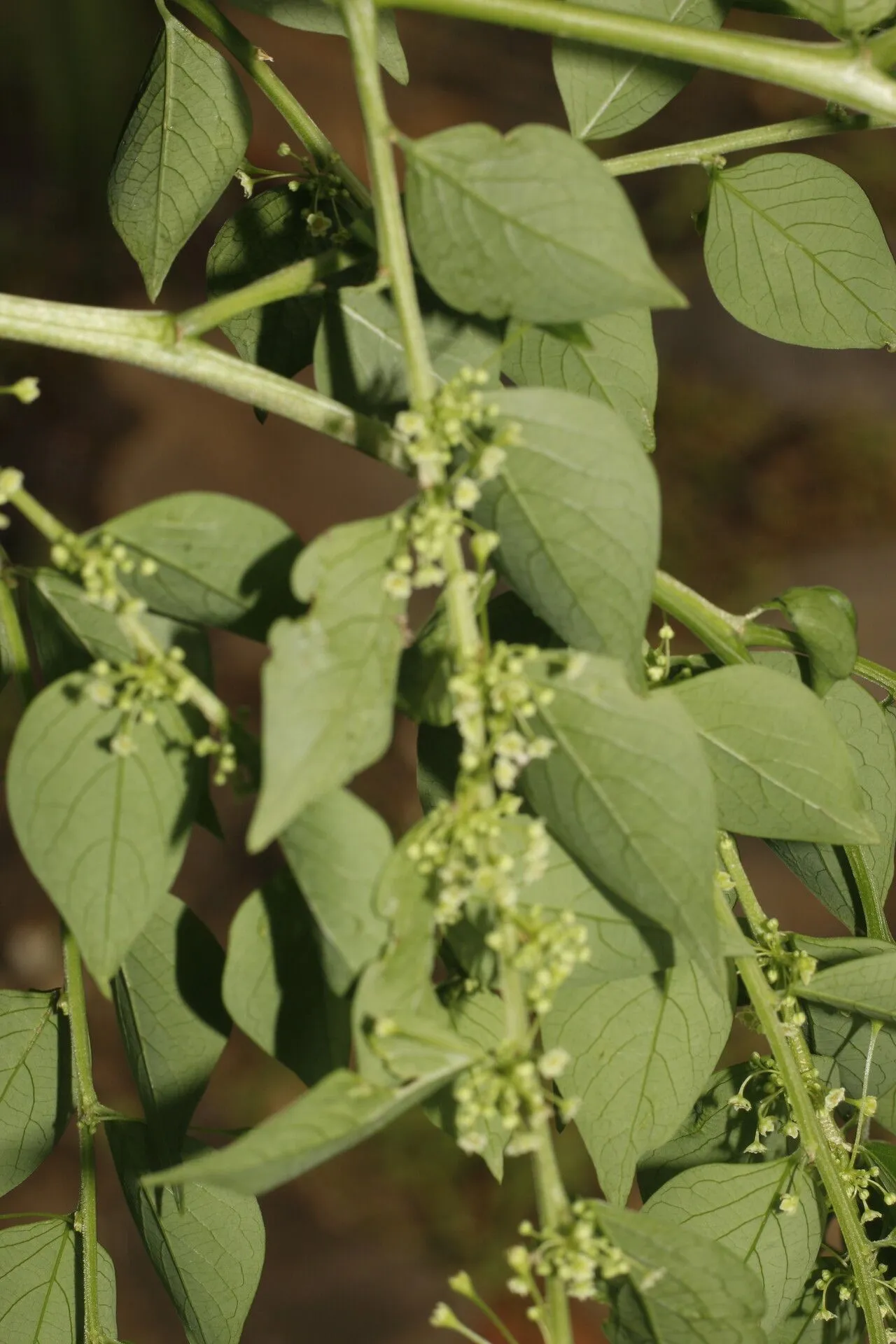
Author: Vahl
Bibliography: Symb. Bot. 2: 95 (1791)
Year: 1791
Status: accepted
Rank: species
Genus: Phyllanthus
Vegetable: Unknown
Observations: Caribbean, Mexico to NW. Argentina
The Jamaican gooseberry tree, known scientifically as Phyllanthus acuminatus, is a fascinating species hailing from the diverse family, Phyllanthaceae. First documented in Vahl’s “Symbolae Botanicae” in 1791, this tree has captured the attention of botanists and plant lovers alike for centuries.
Naturally distributed across a wide geographic range, Phyllanthus acuminatus thrives in the Caribbean, extending its habitat from Mexico all the way to the northwestern parts of Argentina. This wide dispersal indicates the tree’s remarkable adaptability to various climatic conditions and soil types found throughout these regions.
The Jamaican gooseberry tree is known for its distinctive appearance. It typically showcases a compact and bushy growth habit with small, glossy leaves that create a dense foliage. The tree produces small flowers which are quite subtle but add to the overall aesthetic appeal of the plant. Following flowering, the tree bears fruits that resemble small gooseberries, giving the tree its common name.
Culturally and ecologically significant, the Jamaican gooseberry tree plays a role in the local ecosystems where it naturally occurs. It provides shelter and food for various forms of wildlife and contributes to the biodiversity of the area. Additionally, in traditional practices within its native regions, parts of the Phyllanthus acuminatus may be used for medicinal purposes, although specifics on these uses vary and are often based on indigenous knowledge passed down through generations.
Phyllanthus acuminatus is not only noteworthy for its ecological role but also for its ornamental value. Its lush greenery and the charming appearance of its fruits make it a popular choice for gardens and landscapes in suitable climates. It serves as an excellent choice for hedges or standalone specimens, adding both visual appeal and a touch of exotic charm to any setting.
In summary, the Jamaican gooseberry tree (Phyllanthus acuminatus) is a versatile and resilient plant with a broad native range from the Caribbean through Mexico to northwestern Argentina. Its aesthetic qualities, combined with its ecological and potential medicinal significance, make it a noteworthy member of the Phyllanthaceae family.
Eng: jamaican gooseberry tree
Por: para-tudo
En: Jamaican gooseberry tree
Pt: Para tudo, Para-tudo
Taken May 13, 2022 by Nelson Zamora Villalobos (cc-by-nc)
Taken May 13, 2022 by Nelson Zamora Villalobos (cc-by-nc)
Taken May 13, 2022 by Nelson Zamora Villalobos (cc-by-nc)
Taken May 13, 2022 by Nelson Zamora Villalobos (cc-by-nc)
Taken May 13, 2022 by Nelson Zamora Villalobos (cc-by-nc)
Taken May 13, 2022 by Nelson Zamora Villalobos (cc-by-nc)
Taken May 13, 2022 by Nelson Zamora Villalobos (cc-by-nc)
Taken May 13, 2022 by Nelson Zamora Villalobos (cc-by-nc)
Taken Apr 14, 2021 by Nelson Zamora Villalobos (cc-by-nc)
Taken Apr 14, 2021 by Nelson Zamora Villalobos (cc-by-nc)
Taken May 13, 2022 by Nelson Zamora Villalobos (cc-by-nc)
Taken Apr 14, 2021 by Nelson Zamora Villalobos (cc-by-nc)
Taken Apr 14, 2021 by Nelson Zamora Villalobos (cc-by-nc)
Taken Apr 14, 2021 by Nelson Zamora Villalobos (cc-by-nc)
Taken Apr 14, 2021 by Nelson Zamora Villalobos (cc-by-nc)
Taken May 13, 2022 by Nelson Zamora Villalobos (cc-by-nc)
Taken Apr 14, 2021 by Nelson Zamora Villalobos (cc-by-nc)
Taken Apr 14, 2021 by Nelson Zamora Villalobos (cc-by-nc)
Taken May 13, 2022 by Nelson Zamora Villalobos (cc-by-nc)
© copyright of the Board of Trustees of the Royal Botanic Gardens, Kew.
© copyright of the Board of Trustees of the Royal Botanic Gardens, Kew.
© copyright of the Board of Trustees of the Royal Botanic Gardens, Kew.
Family: Myrtaceae Author: (F.Muell.) K.D.Hill & L.A.S.Johnson Bibliography: Telopea 6: 402 (1995) Year: 1995 Status:…
Family: Rubiaceae Author: Pierre ex A.Froehner Bibliography: Notizbl. Bot. Gart. Berlin-Dahlem 1: 237 (1897) Year:…
Family: Sapindaceae Author: Koidz. Bibliography: J. Coll. Sci. Imp. Univ. Tokyo 32(1): 38 (1911) Year:…
Family: Asteraceae Author: A.Gray Bibliography: Pacif. Railr. Rep.: 107 (1857) Year: 1857 Status: accepted Rank:…
Family: Fabaceae Author: Medik. Bibliography: Vorles. Churpfälz. Phys.-Ökon. Ges. 2: 398 (1787) Year: 1787 Status:…
Family: Aspleniaceae Author: (Cav.) Alston Bibliography: Bull. Misc. Inform. Kew 1932: 309 (1932) Year: 1932…